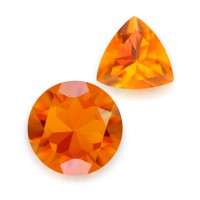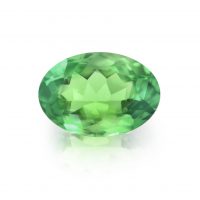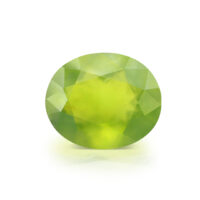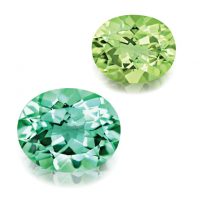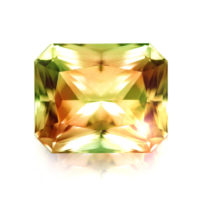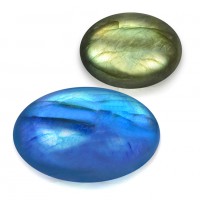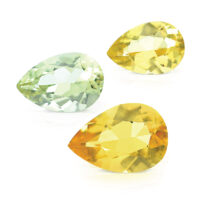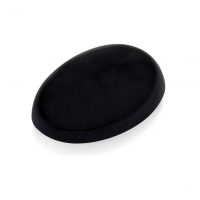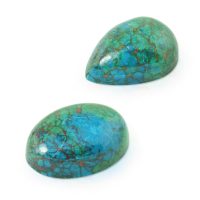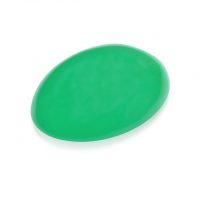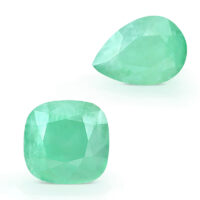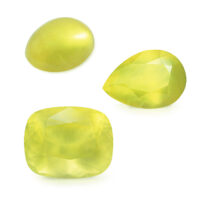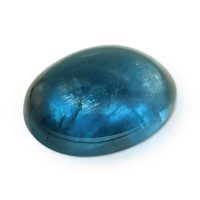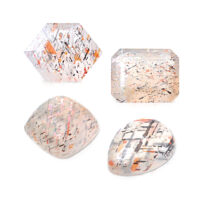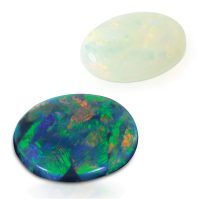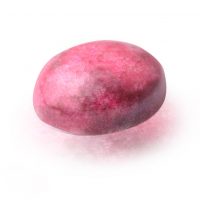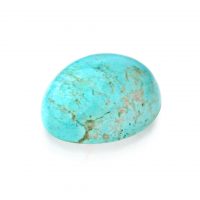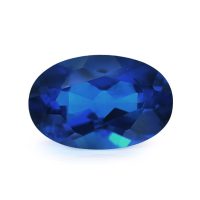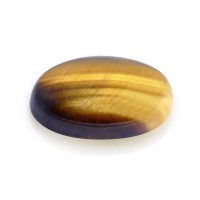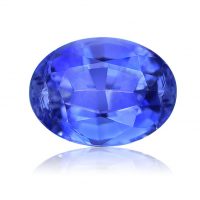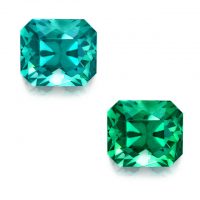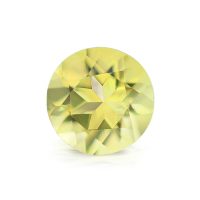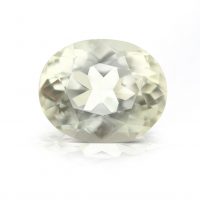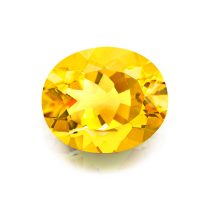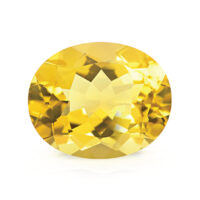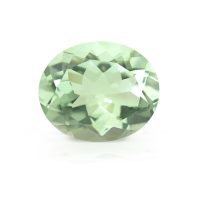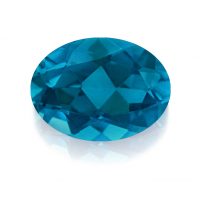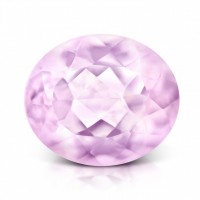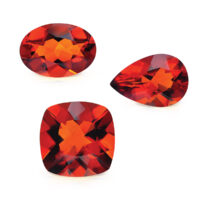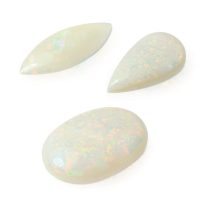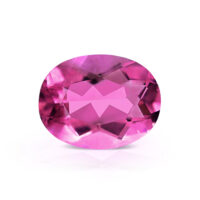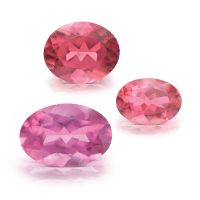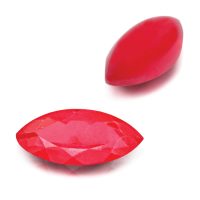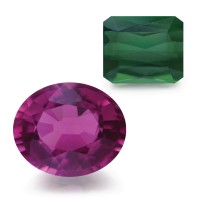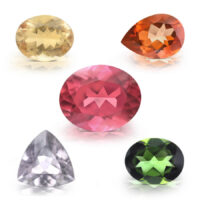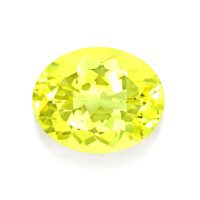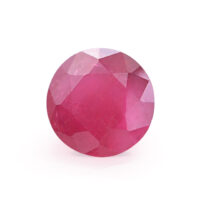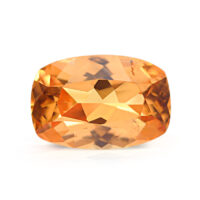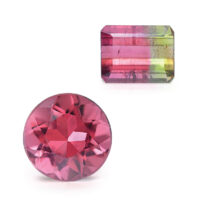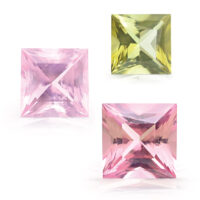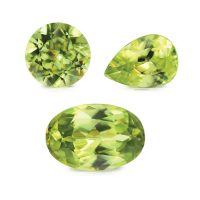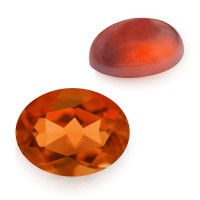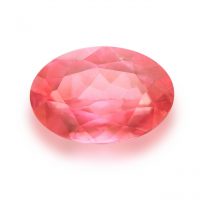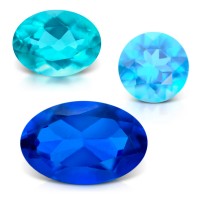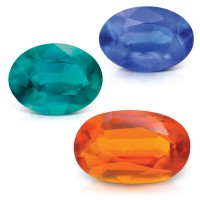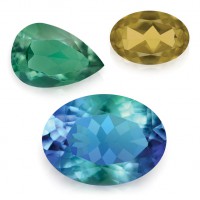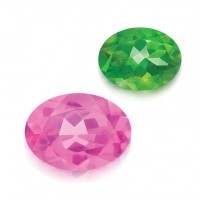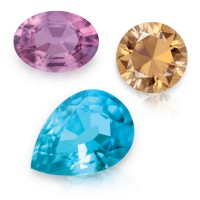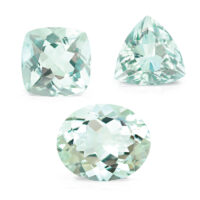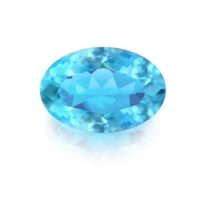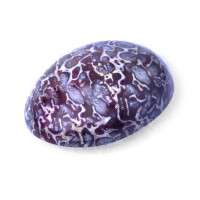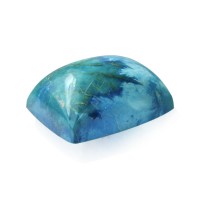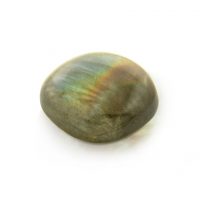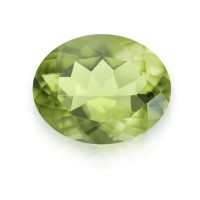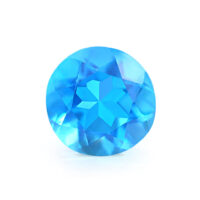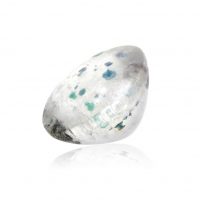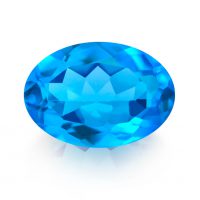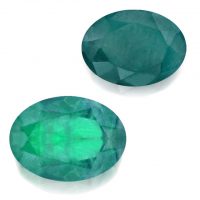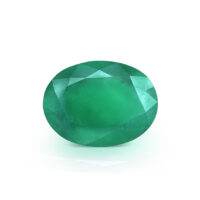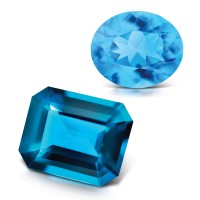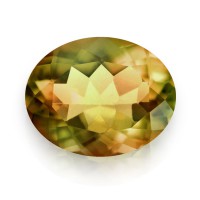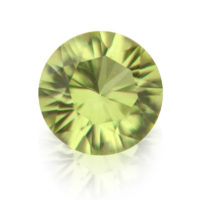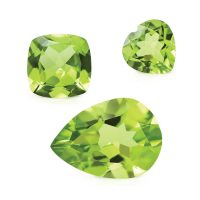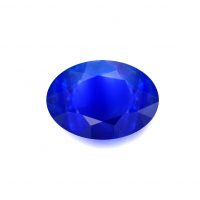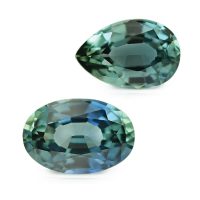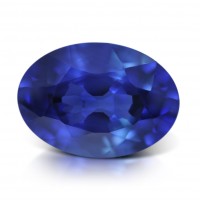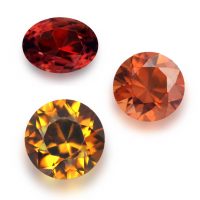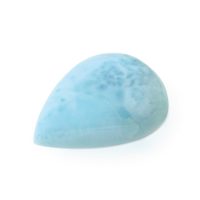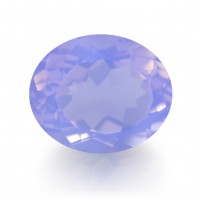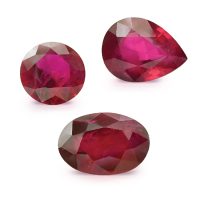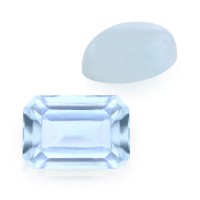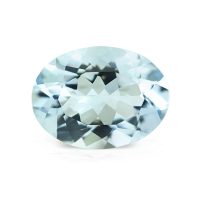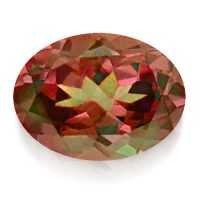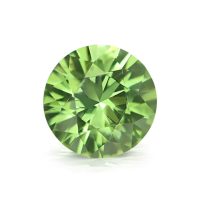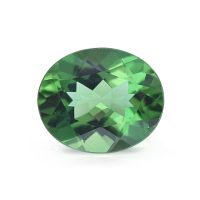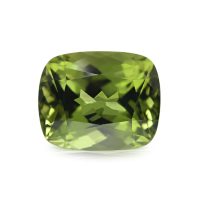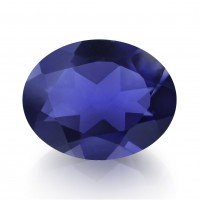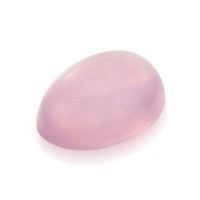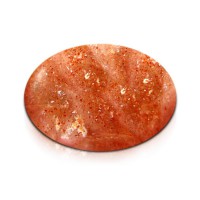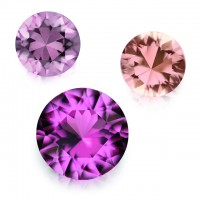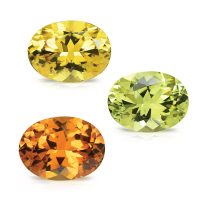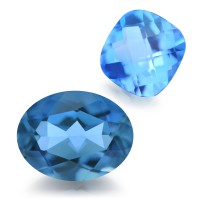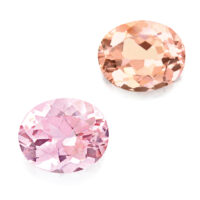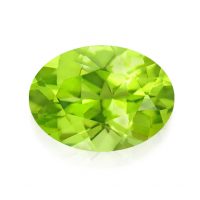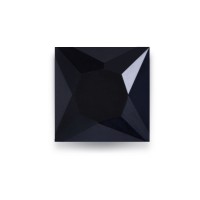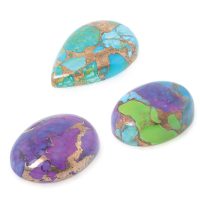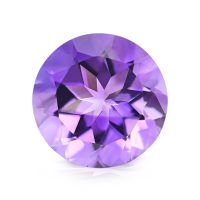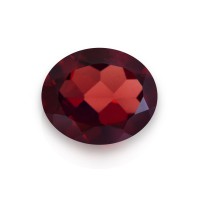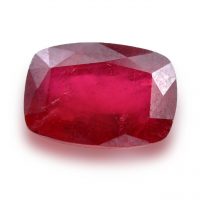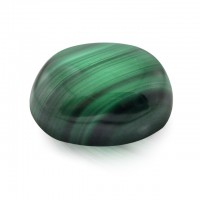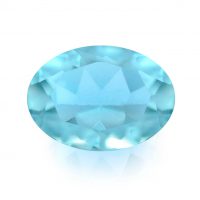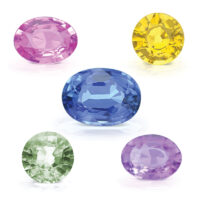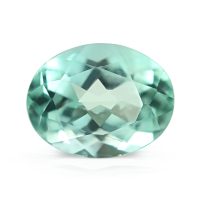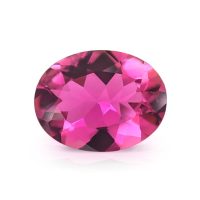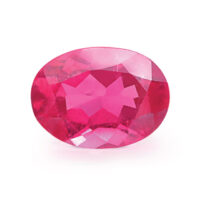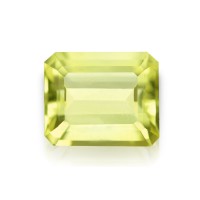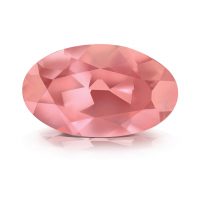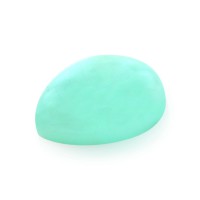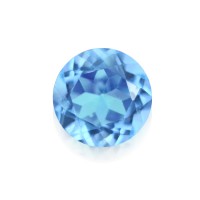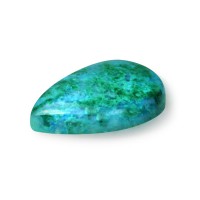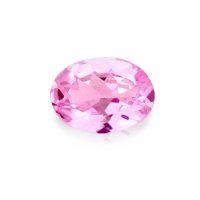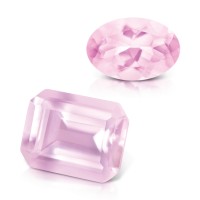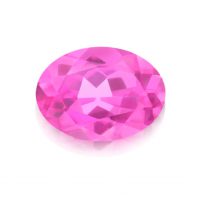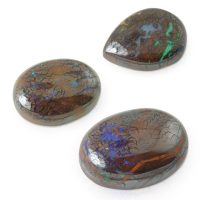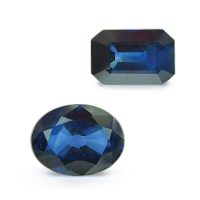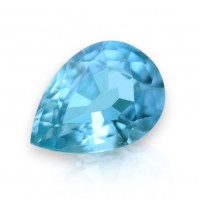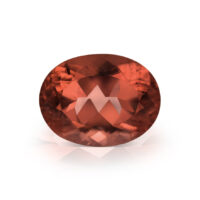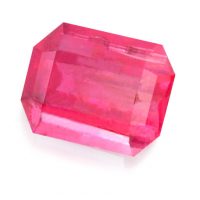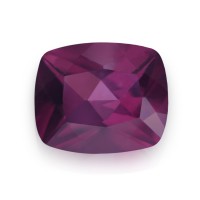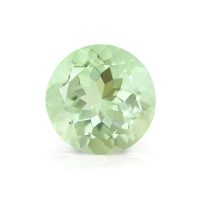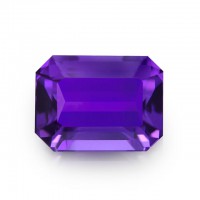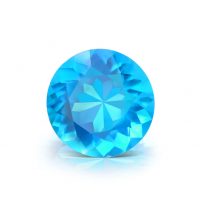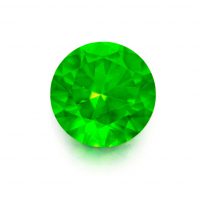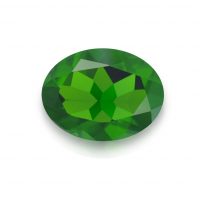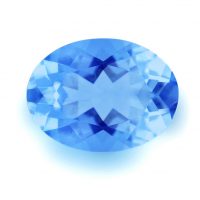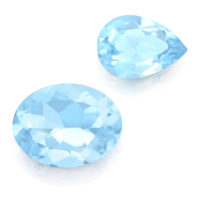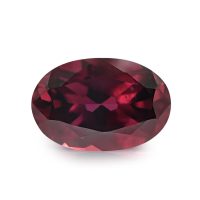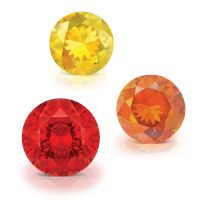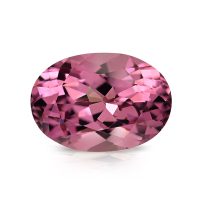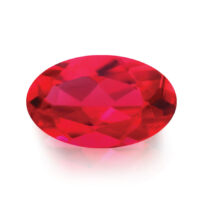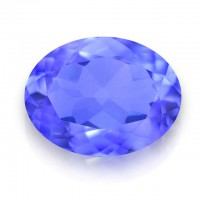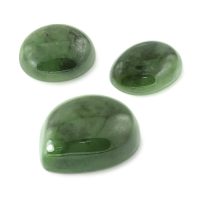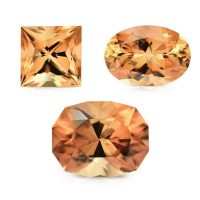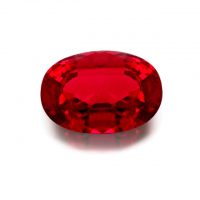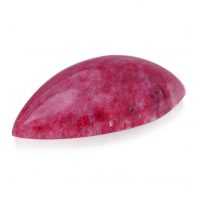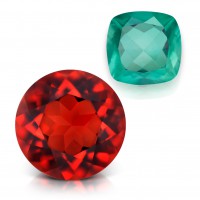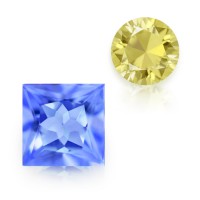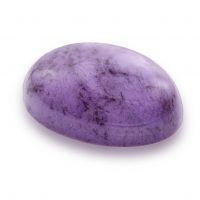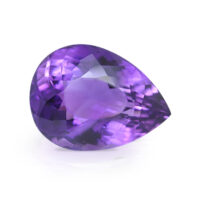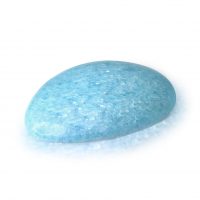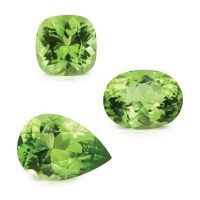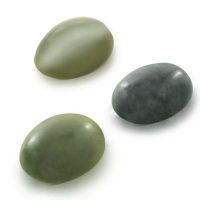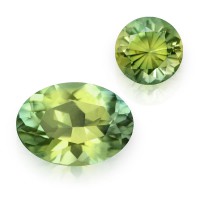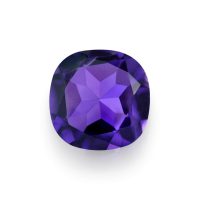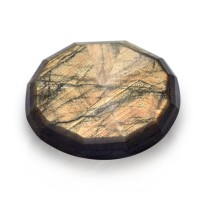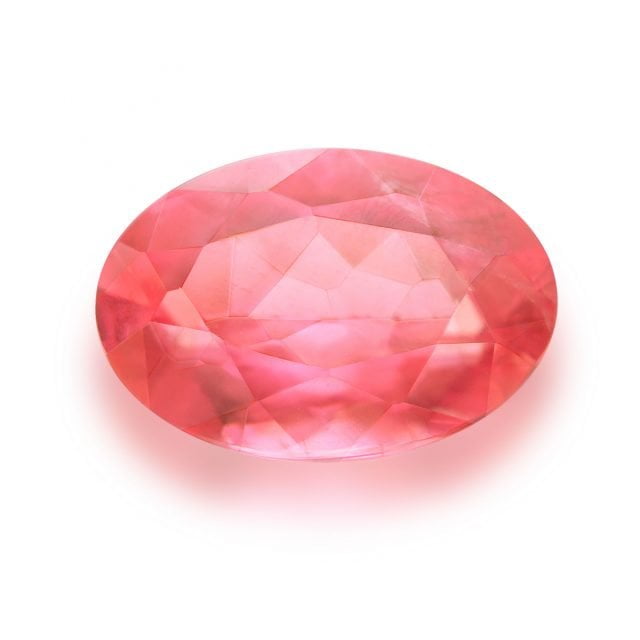

Colorado Rhodochrosite (pronounced row-duh-crow-site) are exotic, undeniably gorgeous, and incredibly scarce, roseate hued gemstones from the Sweet Home Mine in the American state of Colorado. Given all their best deposits are, or are almost depleted, Rhodochrosite prices are always on the increase. One of the few gemstones whose incredible beauty is totally natural and unenhanced, Colorado Rhodochrosite is a gemstone any true connoisseur, who can afford such rarities, should unquestionably consider, and the highlight of esteemed gem, jewelry and mineral collections around the globe.
Hardness 4
Refractive Index 1.600 - 1.820
Relative Density 3.45 - 3.70
Enhancement None
Beauty
Rhodochrosite is a very attractive, but exceedingly rare gemstone with a beautiful color, quite unlike that of any other ‘red’ gem. When faceted, Rhodochrosite should be transparent with a desirable even color, possess good brilliance and luster, and an attractive shape and overall appearance (finish, outline, profile, and proportions).
Its extreme natural scarcity aside, well-cut Colorado Rhodochrosite that display attractive bright, open reddish-pinks, excellent brilliance (due to a high refractive index), transparency, and a gorgeous luster, are extremely uncommon, and are testament to excellent lapidary skills.
The official gemstone of Colorado since 2002, Rhodochrosite’s name is derived from the Greek ‘rhodon’ (rose), ‘chrosis’ (colored), and ‘lithos’ (stone), literally ‘Rose Colored Stone’. Colored by iron, magnesium and calcium, Rhodochrosite is a manganese carbonate mineral available in nearly every shade of red ranging from semi-opaque to translucent. Most notably in tones of crimson, mahogany, chocolate, deep oranges, and pinks. It was first described in 1813 by J. F. L. Hausman after being found in the silver mines of Kapnic, Transylvania, in present-day Romania. Despite this being the first recorded discovery, Rhodochrosite was unearthed by the Incas in the 13th century at copper and silver mines in Argentina and Peru. In 1934 Dr. Franz Mansfield unearthed a Rhodochrosite mine as well as an Incan tomb containing Rhodochrosite funerary jewelry in Argentina’s Catamarca Province. According to local legend, the blood of ancient Inca rulers had turned to stone, resulting in the gem’s colloquial names ‘Roseinca’ or ‘Inca Rose’.
Rarity
While Rhodochrosite is found in several locations worldwide, they are mainly translucent to opaque resulting in cabochon (cut in convex form and highly polished, but not faceted) polished gems; only a few select deposits produce crystals suitable for faceted gemstones. Namely, the famous Capillitas Mine in Argentina, the N’Chwaning Mine at the Kalahari Manganese Field in South Africa’s Cape Province (discovered in 1974, production in South Africa is now very limited), and the Sweet Home and Climax Mines in the American state of Colorado.
The Capillitas Mine in north-eastern Argentina has been mined since the times of the Incas. Later mining activity continued under the Spaniards, the English, and even the Germans. It was also once mined by the Argentine army (for its metals, not Rhodochrosite). This mine is famous for the occurrence of ‘Rosa del Inca’ (Inca Rose) Rhodochrosite, holding the world record for the largest Rhodochrosite stalactites. More than 30 kilometers of adits (an almost horizontal entrance to a mine) were driven into the mountains, making Capillitas the largest mine in Argentina. It is also the one with the most diverse mineralogy; about one hundred minerals are known from this locality, making it the most species-rich deposit in Argentina. Principal ore bodies of the Capillitas Mine are the Capillitas, Carmelitas, La Rosario, Ortiz, Restauradora, and 25 de Mayo veins. It is of tertiary age, making the whole deposit only a few million years old. The mine is located over 3,000 meters above sea level, making regular mining challenging. Its Rhodochrosite shows all sorts of banding and all shades of colors, from almost white to rich pink to a yellowish brown. Often the bandings show a distinct chocolate brown color, which is called ‘Capilliite’ a zinc-rich variety of Rhodochrosite. However, the most impressive and highly esteemed color is a deep crimson red, equaling the color of the very best Rhodochrosite specimens from the world-renowned deposits in South Africa and the USA. Unfortunately, this very best color is almost always hidden in the middle of stalactites and stalagmites, and only exhibits its outstanding beauty when cut and polished. Individual gem-quality crystals of Capillitas Rhodochrosite are typically small and only seldom reach one centimeter, making facet quality crystals of a rich crimson color extremely scarce.
Our Colorado Rhodochrosite hails from the Sweet Home Mine located near the small mountain town of Alma, approximately 145 kilometers southwest of Denver, and is famous for yielding many of the world’s best Rhodochrosite mineral specimens. Discovered in the 1800s, the mines didn’t really start producing until the 90s when a diamond chainsaw was economically used to gently remove large mineral specimens. During the extraction process, some of the crystals broke and it’s from these gemstones are cut. With the mines closing in 2004, Colorado Rhodochrosite is extremely rare. Famous for superb and large Rhodochrosite crystals, new gems are only obtained by scouring old mineral collections looking for damaged specimens whose crystals can be faceted into gemstones.
Fine Rhodochrosite mineral specimens are strikingly beautiful from any locale, and highly valued by mineral collectors; very few gem-quality Rhodochrosite crystals make it to lapidaries. In 1992 the Sweet Home Mine produced the Alma King, a 14×16.5-centimeter perfect rhombohedrum of Rhodochrosite, along with the Alma Rose, another prefect rhombohedrum measuring up to 9.5cm. Both are museum pieces and were sold for US$800,000. The Alma Rose is the center-piece of the Rice Northwest Museum of Rocks & Minerals crystal gallery and the Alma King holds pride of place at the Denver Museum of Nature & Science. With these famous discoveries, collectors around the globe will forever recognize Colorado as the source of fine Rhodochrosite.
Durability & Care
Colorado Rhodochrosite (Mohs’ Hardness: 4) is an excellent collector’s gemstone. Always store Colorado Rhodochrosite carefully to avoid scuffs and scratches. Clean with gentle soap and lukewarm water, scrubbing behind the gem with a very soft toothbrush as necessary. After cleaning, pat dry with a soft towel or chamois cloth.
Map Location
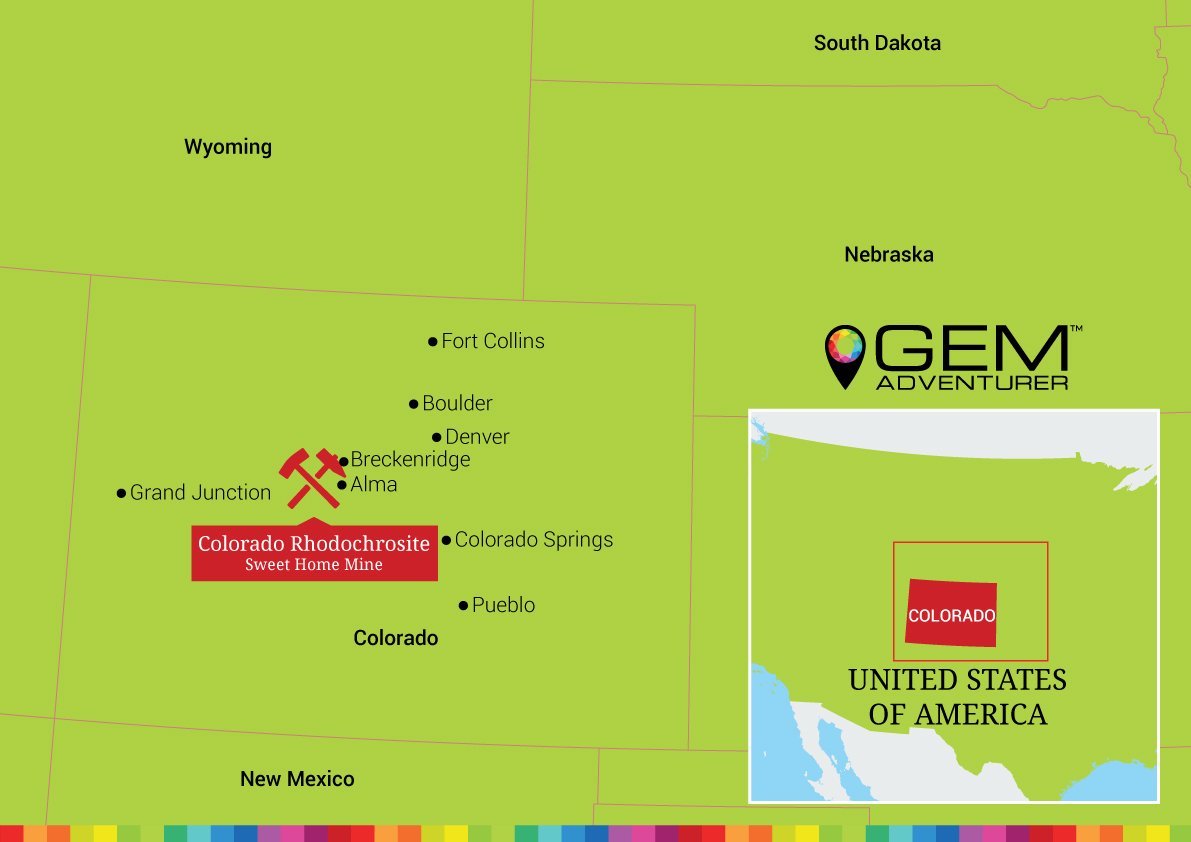
Click map to enlarge
